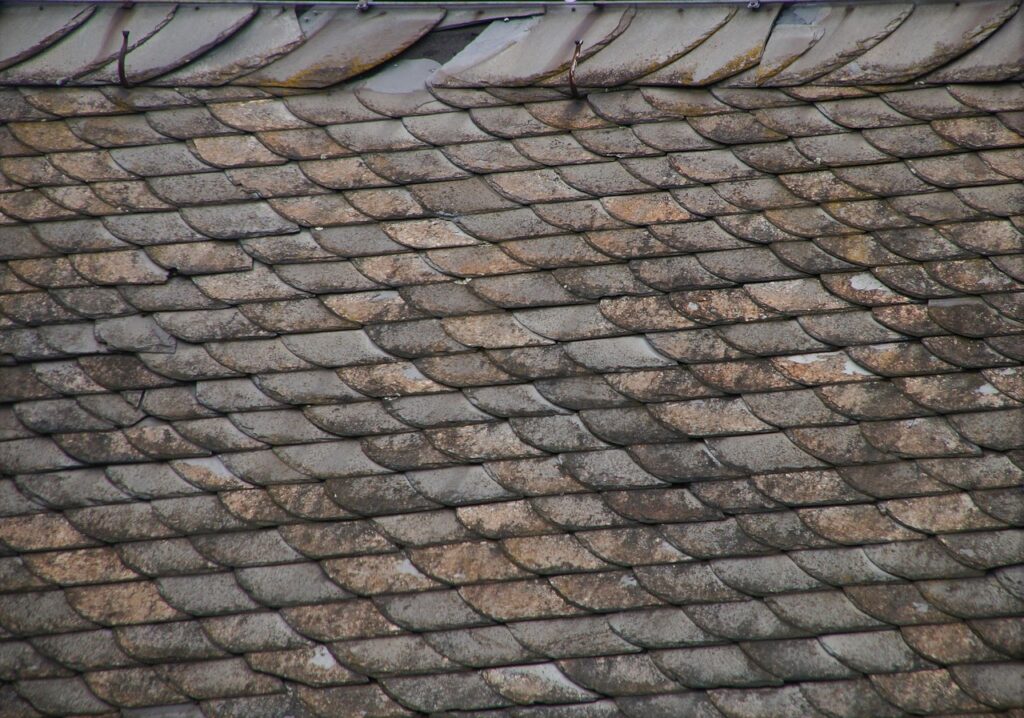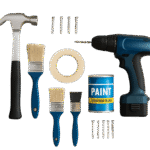A Homeowner’s Guide:
Your roof works hard every single day — protecting your home, family, and belongings from sun, rain, wind, snow, and everything in between. But here’s the thing: many homeowners only notice their roof when something goes wrong, like a leak or missing shingles. By then, small problems can become expensive headaches.
Maintaining your roof year-round isn’t complicated, but it does require consistent attention. A little effort now can save you thousands of dollars later, extend your roof’s lifespan, and keep your home looking great.
In this guide, we’ll break down exactly how to care for your roof through all four seasons, along with pro tips, common mistakes to avoid, and maintenance habits that will keep your roof in top shape.

Why Year-Round Roof Maintenance Matters:
Think of your roof like the engine of your car — if you don’t service it regularly, performance declines, and failures happen sooner than expected. Roof neglect can lead to:
- Leaks and water damage inside your home.
- Mold and mildew growth, which can be dangerous to your health.
- Structural weakening of your home’s frame.
- Shortened lifespan, forcing you into an expensive replacement earlier than necessary.
A well-maintained roof can last decades longer than a neglected one. It’s not just about avoiding repairs — it’s about protecting your investment.
Season-by-Season Roof Care Plan:
Different seasons bring different challenges. Here’s what you should do throughout the year:
Spring: Inspection & Cleaning After Winter
Winter snow, ice, and storms can be rough on your roof. Spring is the perfect time to assess any damage and prepare for the rainy season.
Spring Roof Maintenance Checklist:
- Inspect shingles and flashing — Look for cracks, curling edges, missing pieces, or loose flashing around chimneys and vents.
- Clear debris — Remove leaves, branches, and dirt from the roof and gutters to prevent clogs.
- Check for mold, moss, or algae — These can trap moisture and damage your shingles over time.
- Inspect attic ventilation — Proper airflow prevents moisture buildup that can rot your roof from the inside.
- Hire a professional roof inspection if you’re unsure what to look for.
Summer: UV Protection & Storm Prep
The hot summer sun can cause roofing materials to dry, crack, or warp, especially in areas with high UV exposure. Also, summer storms can bring heavy rains and strong winds.
Summer Roof Maintenance Checklist:
- Trim overhanging branches — Prevent falling limbs from damaging your roof during storms.
- Check for loose shingles — Strong winds can rip these away, exposing your roof.
- Inspect flashing and seals — Heat can cause expansion and contraction, loosening these critical protections.
- Clean gutters again — Summer storms can clog them with debris.
- Consider a reflective roof coating — In hot climates, this can reduce heat absorption and cooling costs.
Fall: Prepping for Winter
Fall is about getting your roof ready for the weight and moisture of snow, ice, and rain.
Fall Roof Maintenance Checklist:
- Final debris cleanup — Remove all leaves, pine needles, and dirt to avoid water pooling.
- Check gutters and downspouts — Make sure they’re clear and directing water away from your foundation.
- Inspect for signs of pests — Squirrels, birds, or insects may try to make homes in roof gaps.
- Check insulation — Good attic insulation reduces ice dam formation in winter.
- Install gutter guards if you have frequent clogging problems.
Winter: Prevent Ice Damage
While winter is the toughest time to do physical work on your roof, you can still take steps to minimize damage.
Winter Roof Maintenance Checklist:
- Monitor for ice dams — These form when heat escapes into the attic, melting snow which then refreezes at the edges.
- Remove heavy snow safely — Use a roof rake from the ground to avoid dangerous weight loads.
- Check indoor ceilings for water spots — Early signs of a leak should be addressed immediately.
- Avoid walking on the roof — Cold makes materials brittle and more prone to cracking

Signs Your Roof Needs Immediate Attention:
Even with regular care, things happen. Call a roofing professional immediately if you notice:
- Missing, cracked, or curling shingles.
- Persistent roof leaks or water stains inside your home.
- Sagging roof sections.
- Large amounts of granules in gutters (a sign shingles are deteriorating).
- Visible mold or moss growth.
DIY vs. Professional Maintenance:
While you can handle basic cleaning and visual inspections yourself, a professional roofer brings:
- Expert eyes to catch hidden issues.
- Safety equipment for hard-to-reach areas.
- Preventive repairs that extend your roof’s life.
A good balance is to do seasonal DIY checks and schedule one professional inspection per year.
Pro Tips for a Long-Lasting Roof:
- Keep records of inspections, repairs, and warranties.
- Avoid pressure washing — it can strip protective granules from shingles.
- Install proper attic ventilation — reduces moisture and heat buildup.
- Fix small problems early — a $200 repair today can save a $5,000 replacement later.
Year-Round Roof Maintenance Schedule (Quick Table):
| Season | Maintenance Task | Purpose |
|---|---|---|
| Spring | Inspect shingles for winter damage | Identify and replace cracked or missing shingles early |
| Summer | Clean gutters and downspouts | Prevent water backup and roof leaks during heavy rain |
| Fall | Remove leaves and debris from roof surface | Avoid moisture buildup and mold growth |
| Winter | Check attic for ice dams | Prevent roof damage and interior leaks caused by ice buildup |
Conclusion:
Taking care of your roof year-round is like giving your home regular checkups. It might feel like a small effort now, but it pays off big in avoiding major repairs, keeping your home comfortable, and protecting your wallet.
Actionable Tip:
Mark your calendar with seasonal roof check reminders — treating your roof like a scheduled chore makes it a habit you won’t forget.
Content Source:
Insights gathered from professional roofing contractors, home maintenance experts, and industry best practices
Social Media Reference:
Follow reputable home improvement and roofing professionals on Instagram, Facebook, and YouTube for visual guides and seasonal tips.
Blogs Reference Theory:
Check leading home care blogs like This Old House, Family Handyman, and Bob Vila for deeper roofing advice.
Posts Reference:
Explore online community discussions (like Reddit’s r/HomeImprovement) to see real-world homeowner maintenance experiences.
Popular Posts:
Useful Links:
National Roofing Contractors Association (NRCA): www.nrca.net
Disclaimer:
The information on this site is for educational purposes only. Always consult a licensed roofing contractor before making repairs.
Contact Info:
For questions or more details about this topic, please reach out using the contact form on this website or email [[email protected]].
